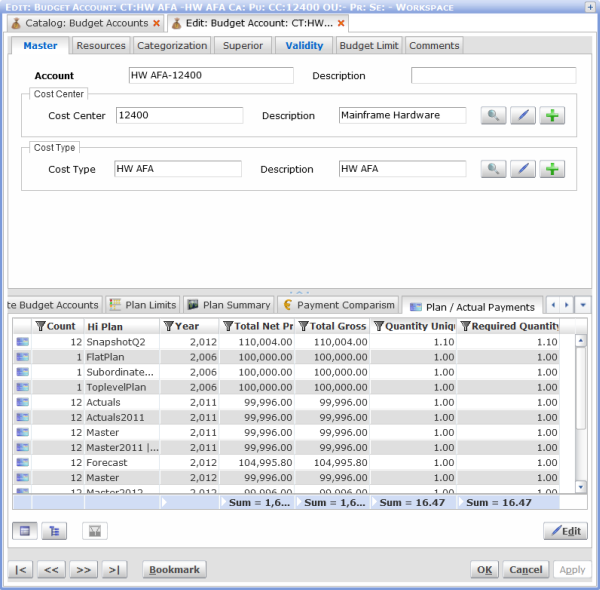Using Plan/Actual Payments
Using the Plan/Actual Payments tab of the Budget Account editor is a faster albeit less flexible way to get comparison results.
The Plan/Actual Payments tab contains a reference list of object of the Unified Payment object type, which puts together real and planned payments.
Report Configuration catalog versus Plan/Actual Payments tab
- When using the Report Configuration catalog, you actually work with Report Configuration objects. Thus it is possible to customize most aspects of the comparison (using Report Configuration to determine which objects are to be compared and how, using the results catalog grouping and filtering features to determine how the results are to be displayed)
- When using the Plan/Actual Payments, most aspects of the comparison are pre-defined. It is possible, however, to use grouping in the reference list to present the comparison in a meaningful way.
In the Plan/Actual Payments reference list, objects may be grouped according any column. Typically, Hi Plan will be at the highest level of grouping. Hi Plan is the plan at the top of each plan hierarchy. Only payments related to a plan have a corresponding Hi Plan associated so we assume that payments with no Hi Plan associated are real payments. Thus using grouping according to Hi Plan in the Unified Payments catalog makes it possible to distinguish between real and planned payments.

All columns of the Plan/Actual Payments reference list (note: two snapshots have been combined in the image)
Note: The Quantity Unique column in the Plan/Actual Payments catalog represents plan quantities with eliminated duplicities which might arise, for instance, due to the fact that identical items are registered in connection with a request, the order based on the request and the resulting contract)